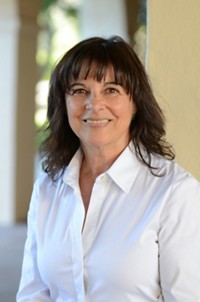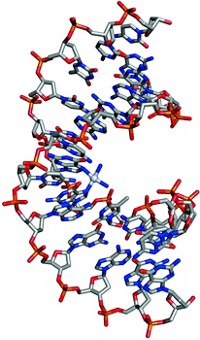Advertisement
Grab your lab coat. Let's get started
Welcome!
Welcome!
Create an account below to get 6 C&EN articles per month, receive newsletters and more - all free.
It seems this is your first time logging in online. Please enter the following information to continue.
As an ACS member you automatically get access to this site. All we need is few more details to create your reading experience.
Not you? Sign in with a different account.
Not you? Sign in with a different account.
ERROR 1
ERROR 1
ERROR 2
ERROR 2
ERROR 2
ERROR 2
ERROR 2
Password and Confirm password must match.
If you have an ACS member number, please enter it here so we can link this account to your membership. (optional)
ERROR 2
ACS values your privacy. By submitting your information, you are gaining access to C&EN and subscribing to our weekly newsletter. We use the information you provide to make your reading experience better, and we will never sell your data to third party members.
People
Frances P. Garvan-John M. Olin Medal
Recipients are honored for contributions of major significance to chemistry
by Linda Wang
February 18, 2008
| A version of this story appeared in
Volume 86, Issue 7
Sponsored by the Francis P. Garvan-John M. Olin Medal Endowment
Elizabeth C. Theil, a senior scientist at the Children's Hospital Oakland Research Institute (CHORI), says that she knew by age 12 that she wanted to be a chemist. "Once I knew genes were chemicals, I had to know how they worked," she says. However, growing up in the 1950s during a time when women were discouraged from being scientists, she says she often felt like a "salmon swimming upstream."
She remembers asking her parents for a chemistry set and being told it was too dangerous for girls. "My parents wanted their children, both girls, to be happy, and for girls to be happy at that particular time involved what is now called 'domestic arts.' They didn't feel that science was a good thing for a girl." Nevertheless, Theil went away to college and continued to pursue chemistry. She says she was fortunate to have had wonderful teachers who made science exciting.
Today, Theil runs a research group that studies the structure, function, and gene regulation of ferritin, the protein nanocage family that synthesizes ferric oxide minerals. Theil's group seeks to understand how iron and oxygen enter the cage, are catalytically coupled, and form ferric oxide minerals inside the cage, and how the mineralized iron is recovered for biological use. Her group also studies the genes and mRNA that regulate ferritin biosynthesis. Through her crystallographic and solution studies of ferritin structure and flexibility, Theil discovered that ferritin pores are gated and that the gates control the rate of iron removal from the iron mineral. In a recent study, Theil and her colleagues found that a heptapeptide, targeted to the protein pores, accelerated iron removal from ferritin. The results define a novel approach to drugs that remove excess iron in patients with the genetic anemias, thalassemia and sickle cell disease.
"She's changed our view of the structure and dynamics of ferritin," says Harry B. Gray, Arnold O. Beckman Professor of Chemistry at California Institute of Technology. "As a result of Liz's work, we have a much better understanding of how to design chelators and to really intercept iron in people who have iron overload diseases. Her work has a lot of potential medical applications down the road."
Theil received a B.S. degree in bacteriology from Cornell University and a Ph.D. in biochemistry from Columbia University. After postdoctoral fellowships at Columbia and Florida State University, she became assistant professor at North Carolina State University. When she was named University Professor of Biochemistry & Physics, she became the first woman in the history of NCSU appointed to an endowed chair. In 1998, Theil joined CHORI as a senior scientist and founded the Center for BioIron.
A champion for women scientists, it's fitting that Theil is the recipient of the Garvan-Olin Medal for distinguished service to chemistry by women chemists. At NCSU, Theil was the first woman president of Sigma Xi and was president of the Triangle Chapter of the Association for Women in Science. At CHORI, Theil mentors many young women scientists. "You have to be fearless in going after the answers to the questions you have," Theil advises. "And you have to be very organized and passionate."
"She's the whole package," Gray says. "She's really dedicated and has contributed enormously both in research and in service."
She will present the award address before the Division of Inorganic Chemistry.





Join the conversation
Contact the reporter
Submit a Letter to the Editor for publication
Engage with us on Twitter